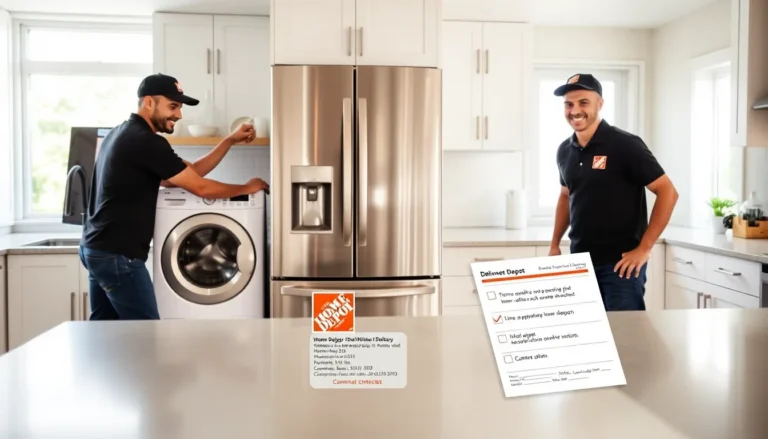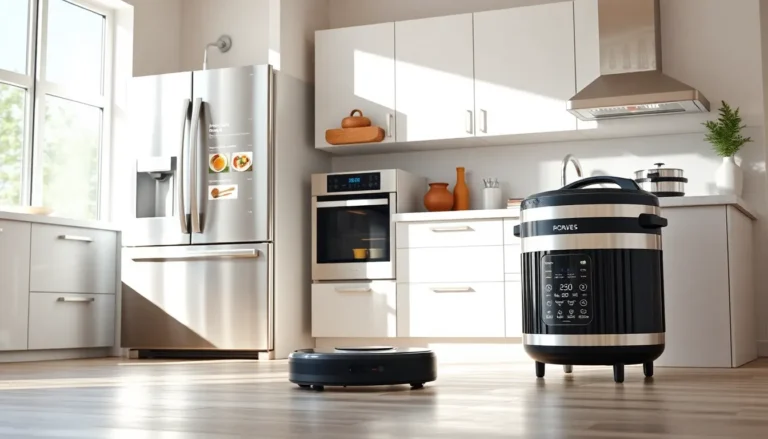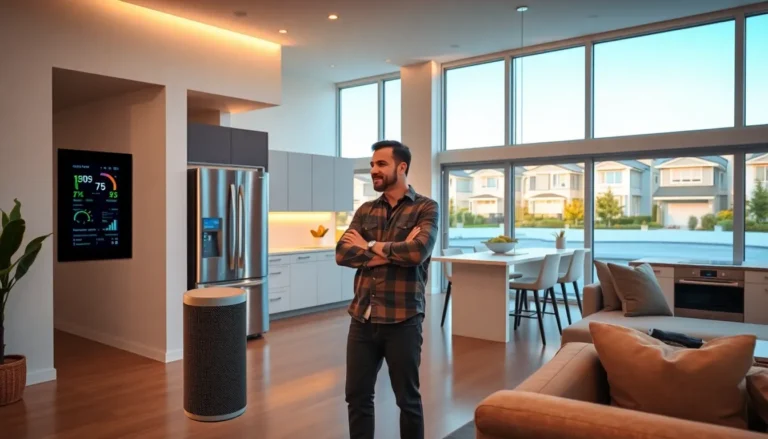Picture this: you walk into your house, and the lights adjust, your favorite music starts playing, and the temperature is just right, all without you lifting a finger. Welcome to the world of AI in smart homes. This isn’t just tech magic: it’s innovation that simplifies life. If you’ve ever dreamed of a home that thinks ahead, you’re in the right place. In this text, we’ll investigate deep into how AI is revolutionizing home living, making it not just smarter but also surprisingly cozy and intuitive. Let’s jump in, shall we?
Table of Contents
ToggleUnderstanding Smart Home Technology

To appreciate AI in smart homes, one must first grasp what smart home technology really is. At its core, smart home technology refers to devices and systems that connect to a network, allowing homeowners to control various aspects of their home remotely. Think of smart thermostats, lighting, security systems, and even fridges that remind you of what to buy.
All of these gadgets work together, communicating via the internet and allowing for automation based on user preferences. Imagine turning off your lights with just your voice or setting your home security to activate automatically when you leave. Each component contributes to a seamless living experience where technology and comfort intertwine.
Also, consider the Internet of Things (IoT), a key player in the smart home landscape. It enables devices to collect and share data intelligently. By understanding trends in user behavior, smart devices can personalize responses, enhancing convenience and efficiency. With this strong foundation, we can see just how crucial AI becomes in making these systems even smarter.
The Role of AI in Smart Homes
Now, let’s talk about AI, the brain behind the magic. Artificial Intelligence takes ordinary smart devices and elevates their functionality to a whole new level. Rather than simply responding to programmed commands, AI enables devices to learn from their users.
For instance, consider smart speakers that understand your specific music preferences. Over time, they curate playlists that match your tastes based on listening habits, making every moment feel tailored just for you. Also, AI algorithms can analyze data from your living patterns, adapting home settings to improve energy efficiency. Picture an AI-enabled thermostat that subtly adjusts the temperature based on when you’re typically home, delivering both comfort and savings on your energy bill.
Also, with natural language processing, AI helps smart assistants understand context and nuances in voice commands. So, if you’re busy cooking and say, ‘Turn on the kitchen lights,’ your device knows exactly which lights you mean, eliminating the chance for mishaps.
Benefits of AI-Driven Smart Homes
The perks of AI-driven smart homes are abundant, making life not just easier but also more enjoyable. One major benefit is improved convenience. With AI integration, homeowners can automate daily tasks. For instance, setting up routines to turn off lights, lock doors, or even brew coffee, all can occur with a simple command or touch.
Also, safety becomes paramount. AI enhances security systems by employing facial recognition and anomaly detection. Imagine an AI camera that learns to distinguish between familiar faces and strangers. It can alert homeowners if it detects unexpected visitors, reducing anxiety.
Then there’s energy efficiency. Houses equipped with AI can optimize energy usage, lowering utility bills. This is done by learning patterns and adjusting appliances accordingly, like running the dishwasher during off-peak hours when electricity is cheaper. Plus, AI can manage home heating more effectively, adjusting for changing weather conditions or occupancy patterns.
Finally, consider the aspect of remote access. Using AI, homeowners can monitor their homes from anywhere through smartphones. Whether it’s seeing who’s at the door or ensuring appliances are functioning, control is at your fingertips.
Challenges and Considerations
Even though the undeniable advantages, integrating AI in smart homes comes with its set of challenges. Privacy concerns often top the list. With smart devices constantly collecting data, users may worry about how this information is stored and utilized. Questions about surveillance and data breaches can make even the most tech-savvy individuals wary.
Also, compatibility issues can arise. Not all smart devices communicate well with each other, leading to frustrating experiences. Choosing products from different manufacturers may result in systems that don’t quite sync up, diminishing the seamless experience users hope for.
Also, while AI promises to simplify life, the complexity of setup and maintenance can deter some homeowners. Learning curve aside, the initial investment for a fully integrated smart home can be daunting. Budget considerations are essential, as costs can add up quickly when equipping a whole home with smart devices.
Future Trends in AI for Smart Homes
Looking ahead, the future of AI in smart homes is bright and full of exciting possibilities. One emerging trend is the rise of voice activation. As natural language processing evolves, homes will respond more fluidly to spoken commands, making interaction feel more like a conversation than a command-driven experience.
Also, the integration of machine learning stands to enhances personalization even further. Imagine homes that not only learn from your daily routines but also anticipate your needs. A smart home could begin preparing your evening lighting and multimedia entertainment before you even walk through the door based on your calendar events.
Besides, as sustainability becomes more critical, AI will drive innovations toward eco-friendly living. Smart systems could optimize water usage, improve waste management, and even integrate with renewable energy sources efficiently. These advancements will not only create a smarter home but also contribute positively toward a sustainable future.
Integrating AI With Existing Smart Home Devices
For those already enjoying smart home technology, integrating AI doesn’t have to be daunting. Many existing devices can be enhanced with AI functionalities through software updates or compatibility with AI platforms. Using AI-centric hubs like Amazon Alexa or Google Assistant allows homeowners to centralize control of various smart devices, turning them into a cohesive system.
Also, assessing which devices are compatible with AI technologies is essential. For instance, smart thermostats and lights that already support AI integration can significantly improve home efficiency and convenience. Homeowners can gradually upscale their systems by introducing AI-driven solutions at their own pace. This approach trends toward an ever-more intelligent home without the need for a complete overhaul of every device.





